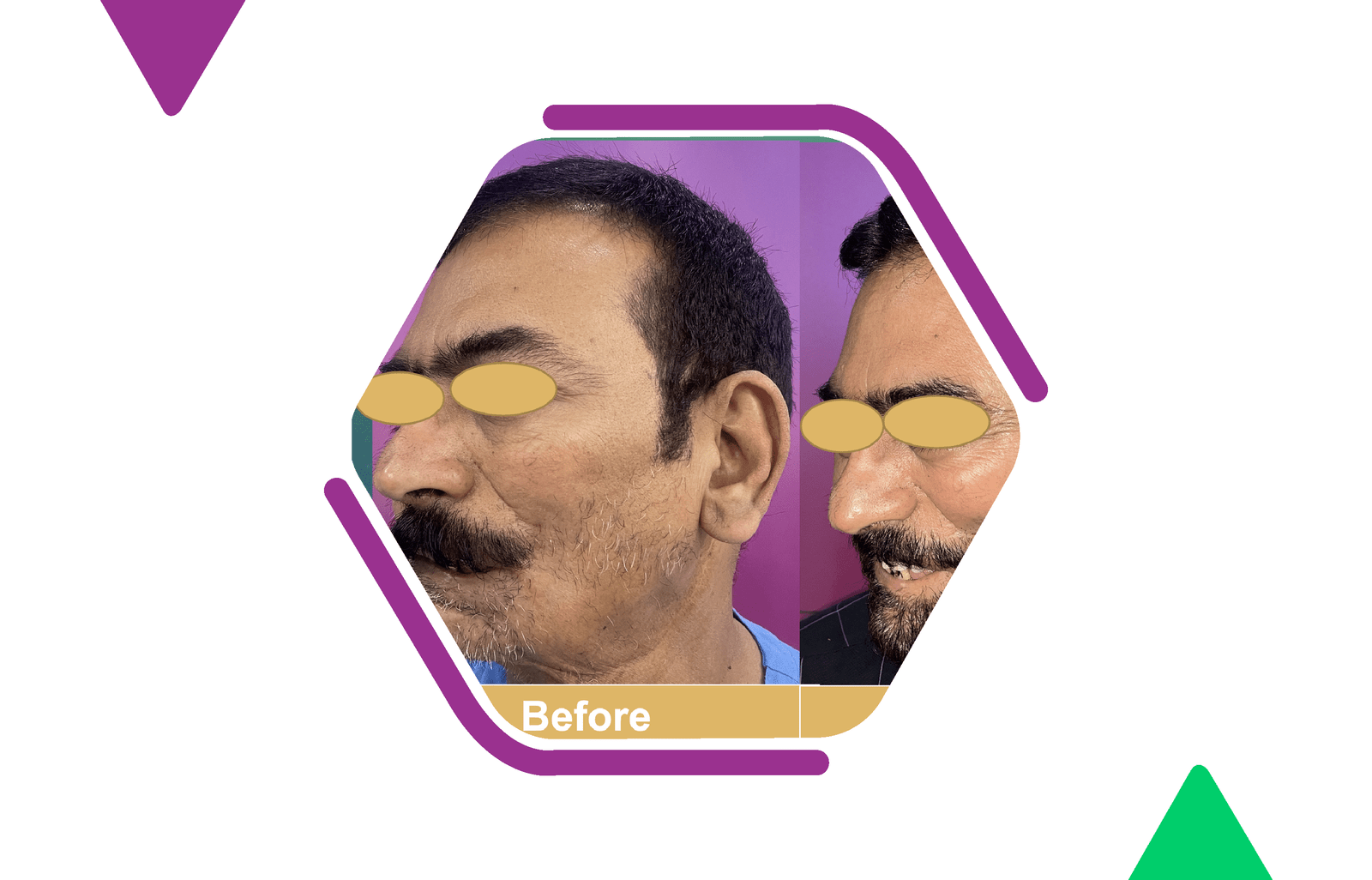Beard Reconstruction

Beard Reconstruction
Beard reconstruction is indeed a challenging procedure due to the very acute angle of exit and the different directions of hair growth in the beard area. Typically, it may require around 1500 to 3500 follicular units (FUs) for effective beard reconstruction. This procedure is often recommended for individuals with indications such as a scanty beard, post-traumatic hair loss, post-radiotherapy hair loss, or post-burn scarring. By carefully considering these factors and utilizing advanced techniques, medical professionals can help patients achieve natural-looking and satisfactory results in beard reconstruction.
Beard reconstruction is an increasingly popular surgical procedure aimed at helping individuals achieve fuller, natural-looking facial hair. The procedure is especially challenging due to the acute angle of hair exit and the varied directions of hair growth in the beard area. Typically, effective beard reconstruction requires the transplantation of approximately 1,500 to 3,500 follicular units (FUs). This intricate process is designed to address issues such as scanty beards, post-traumatic hair loss, post-radiotherapy hair loss, and post-burn scarring.
Indications for Beard Reconstruction
- Scanty Beard: Some individuals naturally have thin or patchy beards due to genetics or hormonal imbalances. Beard reconstruction can help enhance density and create a fuller, more uniform appearance.
- Post-Traumatic Hair Loss: Accidents or injuries that result in facial scarring can lead to hair loss in the beard area. Surgical intervention can restore hair growth, helping to mask scars and improve overall facial aesthetics.
- Post-Radiotherapy Hair Loss: Patients who have undergone radiotherapy for conditions such as head and neck cancers often experience hair loss as a side effect. Beard reconstruction can help these individuals regain their facial hair, which is an important aspect of their identity.
- Post-Burn Scarring: Burns can cause significant damage to the skin and hair follicles, leading to permanent hair loss in the affected areas. Beard reconstruction can restore hair in these regions, improving the patient’s appearance and self-esteem.
The Procedure
Beard reconstruction is a meticulous process that involves several key steps to ensure natural-looking results:
- Consultation and Planning: The first step involves a thorough consultation with a qualified surgeon. During this session, the surgeon assesses the patient’s facial hair patterns, skin type, and overall health. Detailed planning is essential to determine the number of follicular units needed and the optimal placement to achieve a natural look.
- Donor Hair Harvesting: Hair follicles are typically harvested from the back or sides of the scalp, where hair growth is more robust and similar in texture to facial hair. The donor area is prepared by trimming the hair short, and local anesthesia is applied to minimize discomfort.
- Follicular Unit Extraction (FUE): The FUE method is commonly used for beard reconstruction. This technique involves extracting individual follicular units from the donor area using a specialized punch tool. The precision of FUE helps minimize scarring and ensures healthy follicles are transplanted.
- Recipient Site Creation: The surgeon carefully creates tiny incisions in the beard area, considering the natural angle and direction of hair growth. This step is crucial for achieving a realistic and aesthetically pleasing result.
- Graft Placement: The harvested follicles are meticulously implanted into the recipient sites. The surgeon places each follicle at the correct angle to mimic natural hair growth patterns, ensuring a seamless blend with existing facial hair.
- Post-Operative Care: Following the procedure, patients receive detailed instructions on how to care for the transplanted area. This includes guidance on cleaning, avoiding strenuous activities, and protecting the face from direct sunlight. Proper post-operative care is vital for the success of the transplantation.
Advanced Techniques and Considerations
Beard reconstruction has advanced significantly with the development of sophisticated techniques and tools. Innovations such as robotic FUE and platelet-rich plasma (PRP) therapy have enhanced the precision and success rates of these procedures.
- Robotic FUE: This technology uses robotic assistance to enhance the accuracy of follicular unit extraction and placement. It reduces the risk of human error and can improve the overall efficiency and outcome of the procedure.
- PRP Therapy: PRP therapy involves using the patient’s own platelet-rich plasma to promote healing and hair growth. When combined with beard reconstruction, PRP can enhance follicle survival and stimulate faster, healthier hair growth.
Psychological and Social Benefits
Beyond the physical transformation, beard reconstruction can have profound psychological and social benefits. A fuller, well-groomed beard can significantly boost a person’s self-esteem and confidence. It can also improve social interactions and perceptions, as facial hair often plays a key role in male identity and attractiveness.
Conclusion
Beard reconstruction is a complex but highly rewarding procedure that addresses various issues related to facial hair loss. By utilizing advanced techniques and considering individual patient needs, medical professionals can achieve natural-looking and satisfactory results. This procedure not only enhances physical appearance but also contributes to improved psychological well-being and social confidence. With ongoing advancements in hair transplantation technology, the future of beard reconstruction looks promising, offering hope to those seeking to restore their facial hair and regain a sense of normalcy and self-assurance.
Our Services
- Hair Loss
- Causes of Hair Loss
- Clinical Features
- Laboratory Test
- Medical Treatment
- Cyclic Treatment
- PRP
- Hair Transplant
- Surgical Treatment
- FUE
- FUT
- Beard Reconstruction
- Moustache Reconstruction
- Eyebrow Reconstruction
- Side Burn Reconstruction
- Complications of Hair Transplant
- Alopecia Areata
- Telogen Effluvium
- Laser Treatment



 Book an Appointment
Book an Appointment